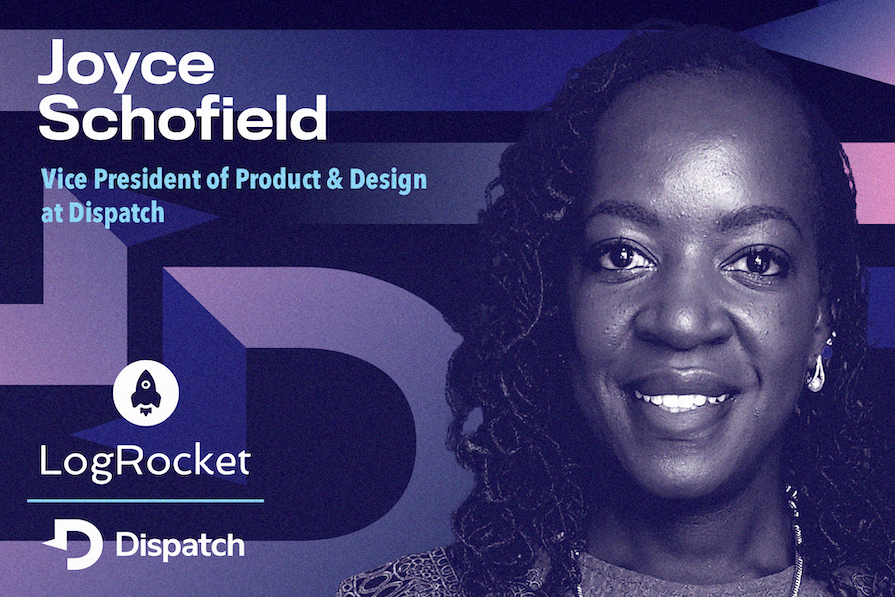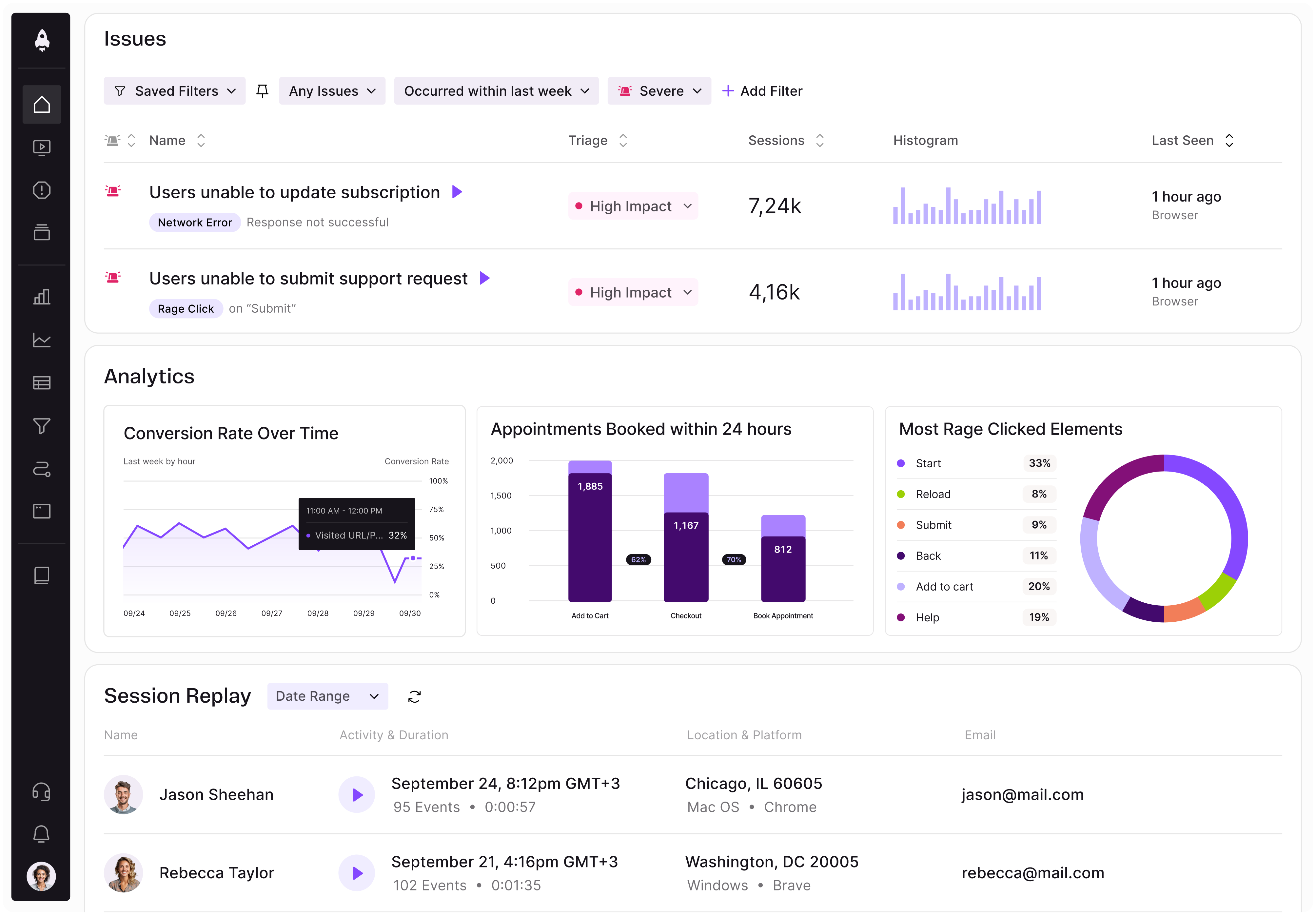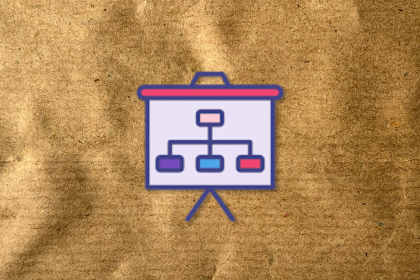Joyce Schofield is the Vice President of Product & Design at Dispatch, a last-mile delivery platform transforming how businesses and gig workers connect. With a proven track record of leading 0-to-1 product launches across high-growth startups and scaling organizations, Joyce is known for building high-performing product and design teams that deliver impact.

She brings deep expertise in navigating the complexities of two-sided marketplaces, especially in logistics and service-based industries where real-time execution meets human experience. At Dispatch, she’s focused on creating seamless, intuitive solutions that meet the needs of both independent drivers and businesses seeking reliable delivery infrastructure.
In our conversation, Joyce shares her approach to product strategy, especially when designing for a two-sided marketplace. She also talks about how she designs for trust in gig platforms and anchors her work around purpose and shared value creation.
This is the secret sauce of being a product manager. I believe in building software that’s simple but not minimalist. Simplicity, for me, means making the customer’s purpose crystal clear and designing a smooth path to help them achieve it.
Through extensive research, we’ve found that customers appreciate when they can focus on something step by step, but also have an idea of how long something might take. That was a big factor in our design process.
We also do a lot of work around understanding the context of the users, how they engage with the product, and the different models that they might have access to. At Dispatch, we provide businesses with delivery primarily via the gig network. Our users are on the road, so their mobile phones are the main screen they use to manage their day-to-day.
I’m also a big proponent of journey mapping. When you take a step back, think about all of the personas involved in a process and their different touchpoints, and map out moments when you delight them or cause unintentional friction, you clearly see the opportunities. It’s then easier to consider those and figure out the minimum experience that you need to surface, and which moments or touches you can take care of behind the scenes.
Gig workers often juggle multiple roles — delivering for platforms like ours, running ecommerce businesses, or freelancing. That kind of hustle demands flexibility, transparency, and trust from the platforms they use.
For independent workers in the gig environment, there’s also a lot of anxiety around being treated fairly. Are they being well-compensated? Is the work environment safe and standard? For example, for food delivery workers, do they have to routinely walk up 10 flights of stairs to drop off orders? Understanding the environments they’ll be working in is critical for them to decide if a particular job makes sense for them.
Further, users get to choose jobs one at a time on the Dispatch platform. This means that we have the unique challenge of delighting them in each of these instances, so they come back and continue picking up our jobs. This isn’t a side hustle for most of our drivers — it’s how they support themselves and their families. Having things like visibility into their performance, access to their earnings, and the ability to set goals are crucial. We want to make sure our platform fits their gig business and lifestyle. Trust is a large focus for us as a result.
From the customer’s perspective, we promise to fulfill delivery within a certain time. We publish our ETAs (estimated time of arrivals) and SLAs (service level agreements). When a customer places an order on our platform, they want to know how long it might take for that order to be assigned to a driver, how long it will take to be picked up or dropped off, etc.
On the other hand, our drivers need to understand what they need to prioritize as well. For example, they’ll know before signing up for a job where the order needs to be delivered and by what time, and they can agree to do it knowing those terms. They also need to feel confident that when they run into something that’s outside of their control, such as a car breakdown or weather disruption, that we are aware of it and will support them.
We’ve invested in route optimization and real-time updates to support drivers in making timely, informed decisions. But more importantly, we frame every product decision through the lens of shared experience — what builds trust for both our customers and drivers? We support communication and awareness during the entire process. That’s been key for us to maintain the health of the two-sided marketplaces.
I’ll give an example. Some orders need an additional amount of support, like a particular type of equipment, certain size of vehicle, etc. We try to make sure that customers let us know what they need so we can surface that in the marketplace. Of course, balancing these inputs with urgency and SLAs is complex, but it’s exactly where we shine — surfacing the right data and setting the right expectations. We try to give as much visibility into the data as we can, and at the same time, it’s important for us to clearly communicate to customers.
In terms of prioritization, it always comes down to what problem we’re trying to solve and who the personas involved in those experiences are. We want to make these experiences seamless, so we don’t see it as prioritizing drivers over customers or customers over drivers, but solving a problem the best way we can. Focusing on the problem always anchors us really well.
When you look at the entire logistics spending of a company, there are multiple phases. In logistics, the “first mile” might mean sourcing goods overseas, and the “middle mile” gets them to local distribution centers. But the last mile — getting a package to its final destination — is often the most costly and complex part of the journey. Last-mile logistics is sometimes 50 percent or more of that total shipping cost because it’s so complicated and expensive.
At Dispatch, we’re trying to solve the biggest problems associated with last-mile logistics and understand the dynamics of market forecasts. Specifically, we’d love to understand customer demand in any specific market at any specific time. That could look like a customer in Chicago this month forecasting based on seasonality. They might need X cars or Y trucks, and only want deliveries in the morning.
On the flip side, we also need to understand supply, which is our drivers. We need to have enough drivers available, as well as enough demand from customers for deliveries. That’s a huge challenge that we need to navigate. Additionally, last-mile logistics are last-minute. A lot of companies fill orders just-in-time — they don’t have warehouses with stuff filled waiting to be shipped out. We do have a lot of runway — 48 hours for some of our orders — but we’re always balancing supply and demand.
A lot of customers experience what I call “anxiety moments” in the customer experience. When they are anxiously waiting for an update on their delivery, our job is to provide the right amount of information and level of communication around what’s going on with their order.
Part of my mission is to also lead user experience, which includes user research, so I’ve added a user research practice to my team. We are constantly researching and trying to better understand the different personas in the space that we play in. Often we’ll invite some of the top drivers from our driver community program to come hang out with us so we can learn more about them. We hosted one of these events recently at Topgolf in Dallas, and it was really nice.
I also try to experience a product from different perspectives. This is how we build empathy. I encourage my team to immerse themselves in each persona — imagine this is you, how would you experience it?” Based on that experience, what are some things that we could do better?
AI has been a game-changer — an enabler that helps us automate repetitive tasks and optimize complex decisions. But we’re careful to pair automation with empathy. Part of it is how we automate and remove the manual nature of repetitive tasks. The other piece that we’re currently working on is automating based on what the data is telling us. How can we understand the process and the hiccups, and essentially build automation, optimization, and capability from that?
For example, if we see a hotspot within an experience via our data analytics tool, how can we use data to trigger a fix? How can we use automation to be more efficient about how we generate some of these instructions or processes in each order? Before we understand an order, we want to treat it as net new, but as we research it, we might find that we’ve done this same route 10 times before. This is an example of where automation can become especially helpful. A past experience can inform the current ones based on historical data.
Lastly, I see AI helping automate decisions. This is a bit scary, but we want to see how we can allow the platform to be self-learning. This is where AI-driven experiences come in. If we see that a driver is stopped on the side of the road, we could display a pop-up that says, “Is everything OK? Would you like to call customer support?”
We use an agile framework. We push out code all the time — sometimes behind flags and sometimes live to the environment, but still behind flags. We try to automate as much of the core capability and functionality as we can, so that we’re only testing the new components. That’s part of standard QA, and we also have user testing to ensure that we’re building something that’s actually going to solve the problem. It’s not just about speed — it’s about learning fast and building responsibly.
This involves things like dog-fooding our platform or doing usability studies to see how features can work. I personally love A/B testing capabilities, especially with how flexible and nimble it’s become lately. The last thing is using data to tell us how things are going. If we’re seeing a lot of errors or tickets popping up, how can we understand this quickly without someone having to report it manually?
As a product leader, I like to anchor myself around a mission that I can be passionate about. Supporting the gig economy is so important — it’s about giving people financial freedom and independence. Dispatch creates real opportunity for gig workers — helping people build sustainable income on their own terms. That mission inspires me every day. As I mentioned earlier, we recently hosted some of our top drivers at Topgolf in Dallas. Hearing their stories firsthand — how they use Dispatch to build freedom into their lives — was powerful.
Dispatch also provides efficiencies within the last-mile environment. As I mentioned previously, this is one of the most costly areas of logistics. Some customers have their own vehicles, fleets, and drivers on payroll. Maintenance costs are high, and all of these items add up. We’ve created such operational efficiencies for our customers, that some have gotten rid of entire fleets and completely eliminated their internal last-mile logistics operations — we provide a “virtual fleet” that’s there when they need it.

LogRocket identifies friction points in the user experience so you can make informed decisions about product and design changes that must happen to hit your goals.
With LogRocket, you can understand the scope of the issues affecting your product and prioritize the changes that need to be made. LogRocket simplifies workflows by allowing Engineering, Product, UX, and Design teams to work from the same data as you, eliminating any confusion about what needs to be done.
Get your teams on the same page — try LogRocket today.

A practical guide for PMs who want to stop being bottlenecks, delegate smarter, and lead teams effectively with a clear ownership framework.

Stop letting unreliable data block features. Treat data as inventory to track quality, ownership, and ship with confidence.

Learn why slide decks slow teams down and explore better tools like whiteboards, PRDs, and prototypes to improve collaboration and alignment.

AI PM roles are evolving fast. Learn the five types of AI PMs, the skills they need, and how they shape AI products across industries.